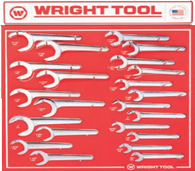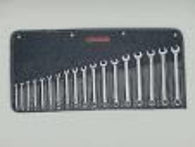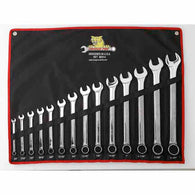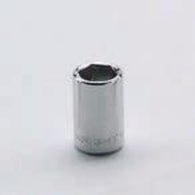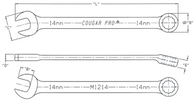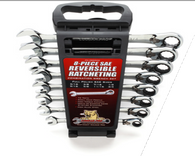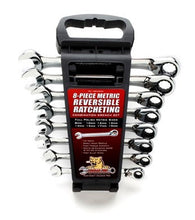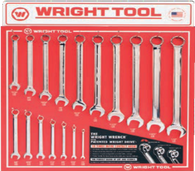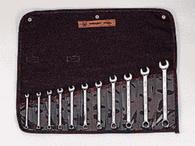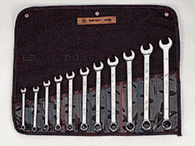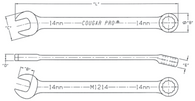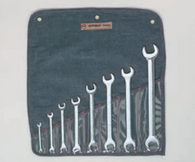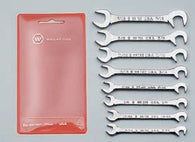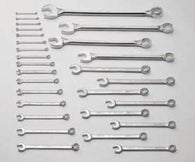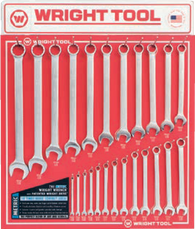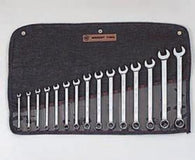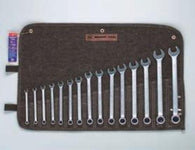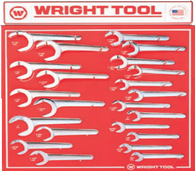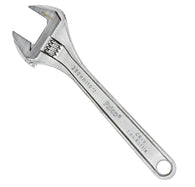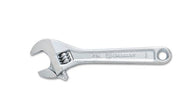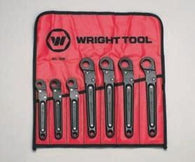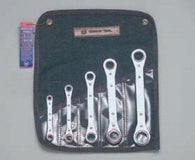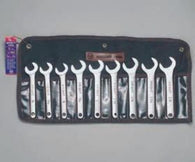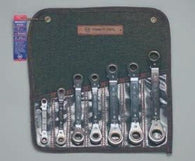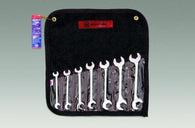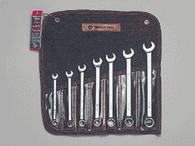Wrenches
Choosing the Right Wrench:
Industrial Wrenches:
Industrial Tool Supply is your source for industrial wrenches. We have been in the industrial market for years so the tools we sell are the tools we buy for our own operations and we pass that experience onto our customers.
Choosing the Right Wrench:
There are a lot of different types of wrenches, each one of them designed to do a specific job so as a professional you need to have a variety of wrenches to meet your needs. If you make a living with your hands or demand the right tool for the job you should look at wrenches that are forged and not just die-cast. Forged wrenches are stronger and more durable because of the manufacturing process.
Types of Wrenches:
Open End Wrenches: A one-piece wrench with a U-shaped opening that grips two opposite faces of the fastener. This wrench is often double-ended, with a different-sized opening at each end. The ends are generally oriented at an angle of around 15 degrees to the longitudinal axis of the handle. This allows a greater range of movement in enclosed spaces by flipping the wrench over.
Box Wrenches: These types of wrenches have enclosed heads to provide grip on all sides on the nut fastener and range in size from 4 to 16 inches long with 6 or 12 point ends. The twelve-point fits onto the fastening at twice as many angles, an advantage where swing is limited.
Combination Wrenches: Simply put a combination of an open ended wrench and a box wrench. The combination wrench is usually used on machinery and is the most popular of all fixed-end wrenches. A reversible ratcheting combination wrench that allows the user to quickly tighten nuts and bolts without lifting the wrench is also available.
Adjustable Wrenches: These industrial wrenches come in two styles: locking and non-locking. Non-locking provides an adjustable end opening with little provision made for slippage. The locking style also has an adjustable head but employs a locking mechanism to hold the jaws in position without repositioning the wrench settings.
Pipe Wrench: These wrenches are primarily used to screw pipes into elbows or other threaded devices. The jaws actually bite into the surface to hold it for turning and should not be used on plated pipe as it could damage the finish of the pipe.
Striking Wrenches: Striking wrenches are one of the most cost-effective methods for turning large fasteners. All that is required is a strong arm and a big hammer to turn large nuts and bolts with these blunt force type wrenches.
Safety Tips for Using Industrial Wrenches:
The first safety rule is always selecting the right wrench size for the job. This avoids damaging your fastener or yourself. Always select a wrench jaw size that corresponds to the fastener you’re tightening or loosening. Make sure your wrench’s jaw is in complete contact with the fastener before applying pressure. These two things will go a long way in preventing your wrench from slipping. Some more tips include the following:
- Monitor the amount of force when using a torque wrench. Too much power will strip the threads and lead to a damaged fastener.
- Always use the correct length and size wrench to do the job.
- Always pull with a wrench and never push a wrench.
- Always be aware of your stance to keep balanced should the fastener suddenly release.
- Never place sockets designed for a hand tool on a power tool or impact wrench.
- When breaking loose frozen fasteners, always use a box wrench with a striking face or a heavy-duty socket wrench.
- Make sure the wrench is secured on the bolt before tightening to prevent slipping of the wrench and causing damage to the part or injury to the user.
- Never use a torque wrench as a conventional wrench.
- Never strike a wrench that was not designed for such impact. The tool can chip or break causing debris to fly towards the user.
- Never put a pipe on the end of a wrench for more leverage. The tool could possibly slip from excess torque or snap causing the user to suddenly lose balance and possibly sustain injury.






